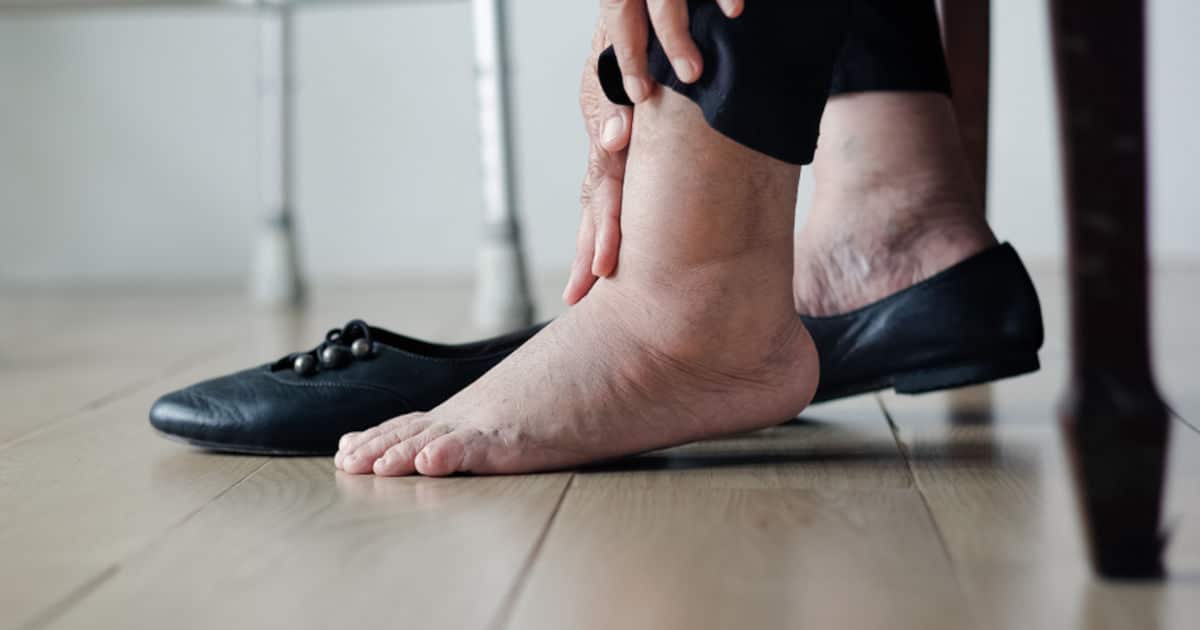Our bodies may experience changes as we grow older, increasing our susceptibility to certain health challenges.
Swollen ankles are one such potential health challenge. Typically, this condition limits movement and may be discomforting at times, and although a swollen ankle isn’t a severe condition, it can indicate an underlying problem. But rest assured, it’s a condition that can improve over time and can be prevented in most cases if appropriately treated.
Older adults can tackle swollen ankle problems by exercising regularly, as the swelling is sometimes caused by inactivity and limited physical exertion. You can read more about the various exercises for swollen ankles.
In the meantime, let’s see what causes swollen ankles and how to manage this condition.
Table of Contents
Causes of Swollen Ankles
Many older adults may experience swollen ankles at least once over their lifetime. Depending on the physiology of the concerned person, its associated pains may be more common in the evenings than in the mornings.
If swelling is the only problem, simple lifestyle changes like wearing compression stockings can help. However, this isn’t always the case, as they might signify a more serious medical condition or some underlying problem you are yet to consider.
These are some of the most common causes of swollen feet:
1. Chronic Venous Insufficiency (CVI)
A swollen ankle can sometimes be an early symptom of venous insufficiency, a condition that results when the veins in the legs do not transport enough blood to the heart. Other common symptoms of CVI aside from swollen feet and ankles are:
- Discoloured skin
- Cramping at night
- Leg aches
- Itching in the legs, etc.
These symptoms are general and are not a replacement for a conclusive diagnosis, so it’s best to see a physician for a proper diagnosis if you experience any of them.
2. Infections.
What causes swollen feet? A swollen foot might sometimes be a sign of a leg infection, which people with diabetic neuropathy may be susceptible to.
Diabetic older adults should inspect their feet for sores and blisters regularly. A diabetic patient may be less sensitive to pain when injured, which is why regular physical inspection is essential. Contact a doctor immediately if you or your loved ones notice sores, blisters, or noticeable discolourations.
3. Kidney, Liver, or Heart Diseases.
Kidney, liver and heart diseases are probable causes of swollen ankles. Poor functioning of the heart’s right ventricle may cause constant ankle swelling in the evenings. When the heat fails to pump blood properly, blood and body fluids might build up in the veins and gradually move into the body’s tissues, resulting in swelling.
Fluid accumulation in body tissues may also signify a failing kidney. Other symptoms of a failing kidney are less frequent urination, seizures, dizziness, etc.
In the case of liver diseases, the organ might stop producing albumin, a protein that prevents blood from leaking through the vessels. A lack of albumin could cause blood leaks, facilitating fluid accumulation in other body parts, including the feet.
This suggests that older individuals shouldn’t disregard consistent, chronic swelling and inflammation as normal and should always contact a doctor as soon as possible to consider treatment options.
4. Blood Clots.
Blood clots are usually a result of poor blood circulation. There are two types of blood clots: superficial blood clots, which happen in veins closer to the skin surface, and deep vein thrombosis (DVT), which is the most common cause of swollen ankles and occurs in veins deeper within the body.
While blood clots generally go away on their own, it’s still a good idea to outline the underlying causes of blood clots to prevent them as much as possible. More severe scenarios may lead to extreme medication conditions if left untreated.
5. Side Effects From Drugs.
Do not be too alarmed if you have a swollen ankle. They are sometimes a side effect of the medications you have been taking.
There may be a decline in our body’s resistance to illnesses and infections as we grow older. It’s, therefore, quite common for doctors to prescribe medications for older adults to help them sustain normal bodily functions and lead a healthy life.
However, bodies react differently to these medications; one of the probable complications is a swollen ankle.
Some medications with swollen ankles as a side effect include:
- antidepressants
- calcium channel blockers
- diabetes medications
- anti-inflammatory drugs, etc.
Other common causes of swollen ankles include:
- surgical complications
- injuries
- unhealthy foods.
Complications Accompanying Swollen Ankles.
A swollen ankle might result in other complications, including:
- scarring of tissue layers
- itchy skin
- stiffness and painful swelling
- heightened risk of contracting an infection
- poor blood circulation
- skin ulcers
- walking difficulties
Having discussed what causes swollen ankles and the underlying complications accompanying the condition, let’s see how to treat these issues.
Treatment for Swollen Ankles
Treating a swollen ankle is one thing. Learning to manage what causes a swollen foot is another. Here are some of the most effective ways of dealing with either of them:
1. Move Your Body Often
We’ve already established that physical inactivity can cause swollen ankle problems. So, an obvious preventative measure is exercising regularly, which is also highly recommended for swollen ankles. However, in this case, you should move the swollen part with a bit more caution.
Continuous ankle use can strengthen cardiovascular muscles, improve blood circulation and reduce the chances of fluids accumulating in body tissues.
2. Care for Affected Skin.
Keeping the affected area clean, wearing gentle clothes on the feet, and protecting the ankle can help soothe the pain and produce fast relief.
3. Massage Therapy.
A simple massage can help relieve the pain from a swollen ankle. Typically, bodies may begin to stiffen as one advances in age. Body massages help the joints loosen up more. In older adults, it can help with the general circulation of previously accumulated excess fluid. A doctor or professional massage therapist is in the best position to oversee this process.
4. Eat less Sodium.
Too much sodium in the body can increase blood pressure and cause fluid accumulation. So, it’s advisable to be gentle on sodium intake, usually from table salt. Some salt alternatives include citrus, thyme, and rosemary. Also, consume more leafy greens and vitamins for improved health.
5. Monitor Fluid Intake.
We need water to stay hydrated. That said, overhydrating may be harmful, leading to electrolyte imbalance.
Not getting proper hydration doesn’t help, as it can cause fluid accumulation. Older persons should consult their doctors about how much water they should drink daily.
Wrapping it Up.
What causes swollen ankles is usually easily addressed and treated with diligence. Sometimes, the solution is just a simple routine to promote proper blood flow and address a lack of hydration, as explained above.
That being said, it’s recommended that older adults contact a medical professional for further diagnosis, especially when the symptoms are persistent, to ensure there are no underlying conditions that may be too severe.






